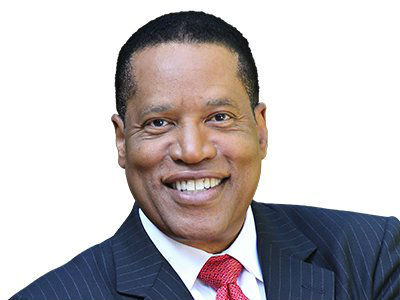Buy online, pickup in store: 4 agile retail trends redefining the customer experience
Lifestyle

Audio By Carbonatix
2:30 PM on Monday, November 10
By Brandon Warren for The Barcode Group, Stacker
Buy online, pickup in store: 4 agile retail trends redefining the customer experience
Retail is one of the most dynamic segments, especially when it comes to adopting and integrating new technologies and business models. It’s the only way to exist and thrive in such a competitive world.
One of the most interesting changes in recent years is the increasing popularity of the “Buy Online, Pickup In Store” (BOPIS) model. Also known as click-and-collect, this model blurs the lines between physical and online retail by allowing customers to purchase online and collect their orders in person.
Given that the last-mile delivery industry is still on an upward growth trajectory, one might wonder why click-and-collect is also on the rise.
Retail strategy agency The Barcode Group forecasts that the buy online, pickup in store model is here to stay, suggesting that every company with physical stores should consider using it in combination with various agile retail trends to upgrade the customer experience and improve foot traffic in both physical and online locations.
Let’s see what this means and which trends to watch for future client strategies.

Why Is BOPIS Popular?
In simple terms, BOPIS allows customers to place and pay for an order online, then pick up the products at a nearby physical location. This goes against how traditional online shopping works, where your online order is sent to the last-mile delivery system before it reaches your door.
But recent data says that the last-mile delivery market gives no signs of stagnation or decline. Forecasts show a thriving market, expected to reach $258.68 billion in 2030. This means that BOPIS is not a replacement but rather a complementary strategy.
Home delivery remains customers’ favorite option, especially during peak seasons, but click-and-collect offers several uncontestable advantages to both customers and retailers.
Here’s a list of common advantages for customers.
- Speed and convenience: They get the items within hours, rather than days. It’s also more convenient, as they don’t have to block an entire day waiting for the delivery and they can pick up the order while they’re already out running errands.
- Cost savings: There are no shipping fees, which can be a significant cost for online orders.
- Certainty of availability: Customers know the item is in stock and ready for collection at a specific location.
- Security: No risk of packages being lost or stolen from the doorstep.
- Immediate returns/exchanges: Shoppers can inspect the products on the spot and make an immediate return or exchange in-store.
For retailers, BOPIS offers higher in-store traffic, reduced shipping costs (no last-mile logistics), and increased fulfillment efficiency. Add to this the improved customer experience, and it’s easy to see why this market sector is on the rise, with a forecasted $36.95 billion by 2034.
How to Integrate BOPIS in Your Strategy
The best approach, backed by retail experts, is a dual strategy that creates a more robust and customer-centric fulfillment model. Businesses that offer delivery options and BOPIS cater to different customer preferences and manage logistics more efficiently.
Here are several agile retail trends you can use to integrate BOPIS into your current business model.
1. Composable Commerce (or Headless Architecture)
This is a modular approach in which the front-end customer interface (website, app, social media storefront, landing page, etc.) and back-end systems (inventory, checkout) operate independently.
This structure allows retailers to integrate online ordering, inventory management, and in-store fulfillment more efficiently. Also, because all the parts are modular, retailers can choose, replace, or upgrade them individually without overhauling the entire e-commerce platform.
You could swap out your entire inventory system or update your front-end app to improve in-store pickup performance — all without interrupting the rest of its online operations.
2. Microfulfillment and Dark Stores
You don’t necessarily need a brick-and-mortar store, with all the costs that entail, to use BOPIS. Many brands use so-called dark stores, which are more like small, automated distribution hubs than public stores.
These facilities help reduce fulfillment times and ensure product availability by keeping inventory near customers. They often rely on automation and real-time data integration through composable commerce systems.
3. Q-commerce (Quick Commerce)
Q-commerce is one of the most aggressive forms of agile retail. Like same-day delivery, this is an evolution of e-commerce, driven by consumer demand for speed and convenience.
Most food and grocery delivery brands practice quick commerce to attract more customers in an oversaturated market and earn their loyalty.
For this strategy to work within the BOPIS context, you need a combination of localized micro-fulfillment centers, AI-driven real-time inventory systems, and a mobile-first app. Given this structure’s design, it’s best paired with headless architectures by connecting fulfillment, payment, and delivery services through modular, API-driven components.
4. Social Commerce (Seamless Checkout)
In 2024, TikTok Shops recorded an estimated $33 billion in global sales, while Instagram generated approximately $37.2 billion in commerce revenue. This is why retail brands focus intensively on social commerce strategies nowadays.
It lets companies capitalize on viral moments in real time and turns social feeds into an integrated storefront. By adding the click-and-collect option, you incentivize social media users to choose your brand over those that only offer delivery.
The Next Era of Seamless Shopping
Customers value convenience and fast delivery, and a retail strategy that combines last-mile and BOPIS will help you offer just that. It’s also a great way to stand out in a highly competitive market, since customers have more options for how they receive their orders.
This story was produced by The Barcode Group and reviewed and distributed by Stacker.

























